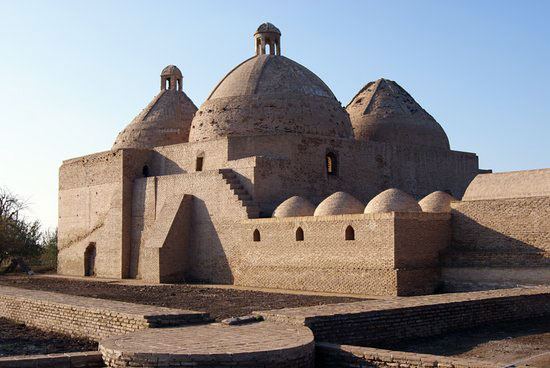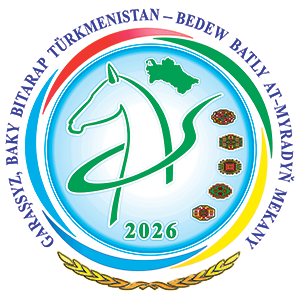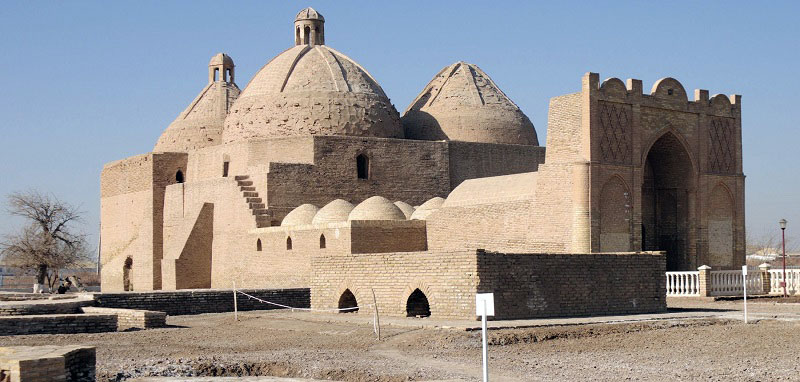Today Astana-baba is a modern settlement located just two kilometers from the Amu Darya. At the beginning of the last century, ersari Turkmens lived here, engaged in agriculture, silkworm breeding, and the manufacture of boats for fishermen. The locals were excellent woodcarvers, potters, gunsmiths and blacksmiths. Workshops and shops of traders in large numbers were located around the bustling bazaar, mosque and the main local shrine - the mausoleum of Alamberdar.
In the fall of 1899, the first European to visit Astana-Baba for the purpose of its scientific study was the Russian orientalist Boris Litvinov. He compiled a detailed description of the village's monuments and related legends. The next page in the history of the study of the past of the settlement was written by Academician Mikhail Masson. He, thanks to coin finds, remains of ceramics and rare written sources, found out that this territory was inhabited by people already about two thousand years ago. The scientist identified the city of Kerki (now Atamyrat) with the medieval city of Zemm, the first mention of which dates back to the 7th century and is associated with the invasion of the Arabs into Central Asia. And next to Zemm was the town of Maimarg, the obvious predecessor of Astana-baba.
The ruins of the ancient citadel, called Omar-kala in Turkmen, were examined by another famous archaeologist, Viktor Pilipko. One of the most interesting finds made as a result of the excavations of the Pilipko team is a terracotta figurine of a goddess with cult attributes.

The main attraction of Astana-baba is the Alamberdar mausoleum. The diplomat and court historian Abu Nasr al-Utbi, who lived at the turn of the 10th-11th centuries, mentions the construction of this monument in his book dedicated to the deeds of Sultan Mahmud Ghaznevi. Maimarg in the work of the scientist is called the place where the body of Ismail al-Muntasir, the last representative of the Samanid dynasty, who was killed in 1005, was brought for burial. Mahmud Ghaznevi was considered al-Muntasir's ally in the fight against their common enemy - the Karakhanids, so the sultan could well have ordered the construction of a mausoleum in Maimarg to perpetuate the memory of the great commander.
The well-preserved monument, located at the foot of the majestic Omar-kala hill, testifies to the high level of architectural excellence in this region during the 11th-12th centuries. The building emphasizes all the distinctive features of the monumental architecture of that ancient era. These are impressive dimensions in the plan, and ornamental brickwork with the use of figured carved bricks, and the entrance portal, highlighted on one of the four facades. Three hundred years after the construction of the mausoleum, such portals became the main means of expression in the architecture of Central Asia, Iran, and then the entire Islamic world.
According to local legend, Alamberdar, whose name supplanted the name of Muntasir from memory, was the standard-bearer and commander of the Caliph Ali. Legend has it that one day his squad was in the desert, and all the fighters were thirsty. The brave warrior went alone in search of the well and, in order not to get lost, asked his friends to light a fire at night. Having found the water, Alamberdar mistakenly came to the fires of his enemies, and they killed him. The next morning, the commander's associates recaptured his body, betrayed the hero's ashes to the ground and erected a mausoleum over him.
Since the monument did not become a place of pilgrimage, as is usually the case with real tombs of saints, it is now believed that the burial is associated with a secular person, because historically the mausoleums of commanders rarely acquired the status of a religious shrine.
Roman Teplyakov







